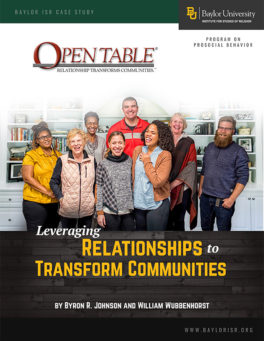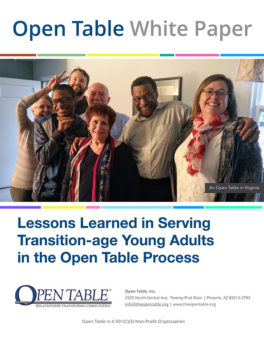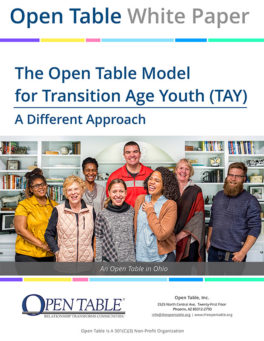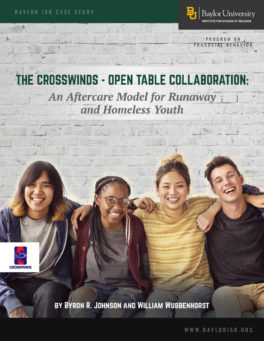Transition to adulthood is a complex task for almost all young people. This same transition to adulthood becomes even more difficult for youth transitioning from systems (foster care, juvenile justice, mental health, etc.). The majority of these youth and young adults are faced with homelessness, addiction, incarceration, lack of job skills and unemployment, physical and other health concerns, as well as isolation, loneliness, and vulnerability to human trafficking.
Relational poverty is one of the most daunting challenges faced by youth aging out of foster care. For TAY who do not have one of the three permanency outcomes supported by the child welfare system that provide long-term relationships – reunification, kinship care/guardianship, or adoption – a poverty of these relationships can diminish their human potential and hope for a bright future.
Relational permanency and its durable, empowering life-long connections for TAY through the Open Table Core Model are created by three elements: Relationship, Reconciliation and Restoration.
Relationship
“I know what love is now. I would have never had that without my Table.”
Transitional age youth in Texas. Watch Jessica’s Story Here
Reconciliation
“No one I can think of would have cared if anything happened to me. Now six people want to know me. They became an instant group of people who care.”
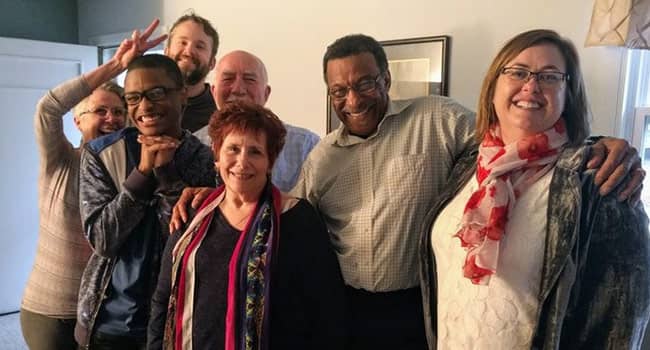
Transitional age youth in Virginia.
Restoration
“Abandoned. Broken. Neglected. That is how I described myself before my Table. Embraced. Restored. Cared for. That is how I describe myself now.”
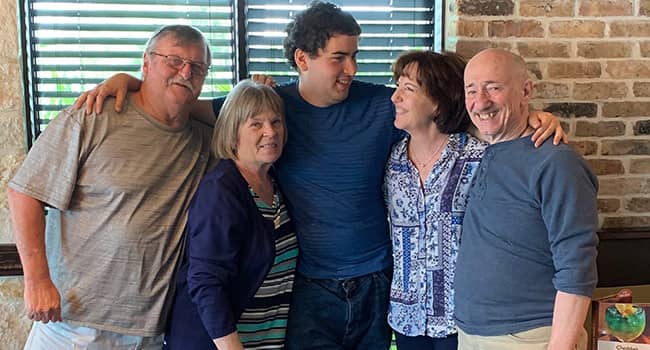
Transitional age youth in Florida.
Relational Permanency Makes the Difference

TAY without one of the three levels of permanency — reunification, kinship care/guardianship, or adoption — often experience poverty, homelessness, incarceration and mental health challenges. Effective community-based systems can help meet basic needs, but these complex needs require access to social connectedness and a broader array of social capital supports. Relational permanency provides a TAY with access to relationships and the social capital networks they need to develop sustainable lives.
Creating Relational Permanency

Research shows that when young adults are connected to social network(s) and direct support, they have opportunities to practice and develop adult life skills and have better long-term outcomes as adults. The task of making these connections is often more complicated than expected. Since 2005, Open Table has been developing methods for providing these networks and direct support to TAY. These methods are more community-driven, as opposed to being delivered as part of a services package.
The Core Model for Relational Permanency
The Open Table® Model
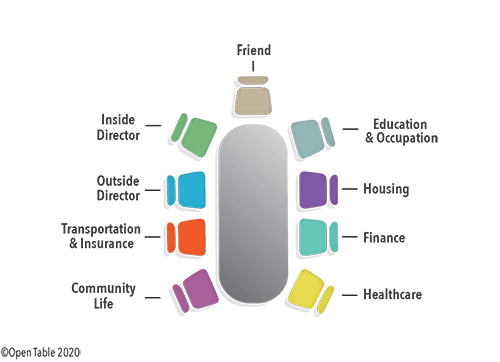
In Open Table, community members are trained to use their vast relational capital and social networks (Open Table has named them Relational Assets™) to develop relational permanency for TAY. Volunteers are trained to form a “Table” and develop long-term relationships with the “Friend” — the individual or family they are serving. Guided by a Life Plan defined by the Friend, Table members and the Friend access their social networks to support implementation of the Life Plan. Tables range from five to twelve volunteers based on needs and number of family members. Over the course of a year, Tables meet weekly for an hour and share friendship and activities outside of Table meetings. At the end of twelve months, Tables form an “After Plan” that defines the ongoing, supportive relationships developed through the Table.
Transformational Outcomes
As a result of the transformation precipitated by Open Table, many TAY have dramatically improved their quality of life, while also decreasing their level of involvement with a variety of taxpayer-funded programs, ranging from criminal justice to TANF to foster care for their own children, just to name a few. In addition, Friends who obtain and improve their employment earnings are contributing to the tax base via income and sales taxes, rather than drawing from it. These savings (or Returns), compared against the relatively low cash costs to operate (Investment), result in a significant ROI for communities. This recent ROI analysis is not intended to capture the full benefit and impact for a Friend, but simply to capture the aspects of those outcomes that lend themselves to financial measurement.
From the 2020 Baylor University Program on Prosocial Behavior Case Study*
“Based on research demonstrating the public costs associated with these outcomes, an estimated $915,806 in future public program costs were avoided and additional tax revenues generated through increased lifetime earnings. Compared to an estimated annual cost of $44,300 for OT implementation and administration, this resulted in an estimated ROI of $20.07 for every $1.00 invested in the Open Table process.”
“This calculation is primarily on short-term savings and outcomes occurring within a 2-year span. What is not included here are the significant savings associated with changing the trajectory of these Friends lives through their newly found social networks and resources, and the changed trajectory for their children as a result of breaking out of the generational cycle of poverty. Open Table has experience with dozens of Tables for families with parents from the child welfare system, and as a result is working with child welfare authorities in many sites. For the majority of these Tables, safe and effective reunification was the result of the Table experience. This greatly reduces the chances that the next generation of children from these families will end up in foster care.”
*75% of case study subjects were TAY
